When to Use Self-Etching Primer?
Learn what it is and how to use it correctly
If you need to paint a metal or fiberglass surface, you will definitely have to prepare it for paint application. And since metal and fiberglass are challenging materials to paint, finding the right primer is essential.
This is when you might want to consider using a self-etching primer. This product will do the double job for you, both etching the metal of the fiberglass surface and working as a primer at the same time.
From this article, you can learn what the self-etching primer uses are and what this product is in fact.
Also, we will explain in what situations you should use it. And of course, you will learn what distinctions a self-etching primer has in comparison to a regular primer.
When You Should Use Self-Etching Primer?
If you have never used this product before, you might be wondering in what situations this kind of primer could be handy. Generally speaking, a self-etching primer should be used when you need to paint a bare metal or fiberglass surface. In a few words, this kind of primer is used on three types of surfaces:
- Metal
- Fiberglass
- Hard plastic
See, this product is specifically designed to make those materials (that are pretty hard to work with!) easier to paint by making the surface rougher. Plus, a self-etching primer can offer some protection to the underlying materials.
As a result, this product will be protecting metal and fiberglass surfaces from scratches, oxidation, and more, depending on the product you choose.
Using a self-etching primer on hard plastic is not as common as using it on metal or fiberglass, but it can also be a wide choice. Like metal and fiberglass, hard plastic typically has a smoother surface that you will have trouble with painting. But with the help of a self-etching primer, you will be able to prepare the surface and apply a coat of primer all at once, making the surface easier to paint.
However, if you need to prime hard plastic, you will have to make sure that the self-etching primer you choose is designed to work on this kind of surface. Not all of them are compatible with that material, so check the label before you begin!
Of course, it is easy to make a conclusion that, since self-etching primer works on the materials listed above, it is widely used in the automotive industry and body shops. It makes vehicle exteriors easier to paint without the need for manual sanding, which leads to higher efficiency.
However, it can be used not only in the automotive industry! For example, you may use self-etching primers to prepare metal gutters for painting. The same goes for paint projects involving metal toys, models, or figurines.
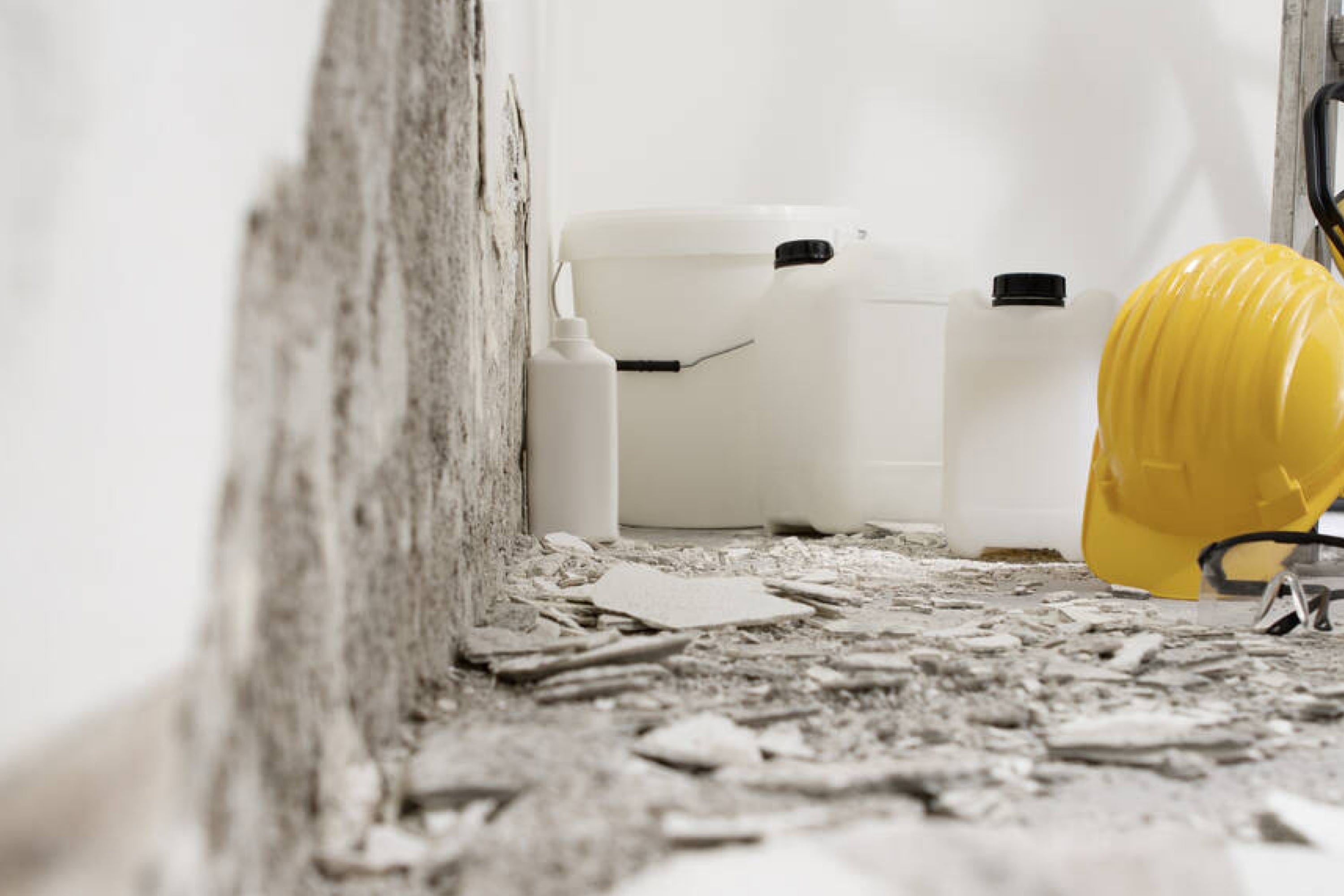
amedeoemaja via VistaCreate
Table of Contents
What Is Self-Etching Primer?
Of course, if you are going to use a product you have never used before, it is good to know what it is, not only when it can be used. When you understand its structure and “anatomy”, you can better realize how it works and why.
So first of all, you need to know that a self-etching primer is a combination product. On the one hand, this product etches the surface of metal or fiberglass, and at the same time, it also acts as a primer. If you use a self-etching primer, it allows you to make sure you will get a better paint adhesion using less effort and time while protecting the underlying material.

housekeepingbay.com
As you already know, a self-etching primer is a special type of primer designed for metal and fiberglass mostly.
However, it can also be successfully used on hard plastic as well. Typically, this type of primer contains materials like phosphoric acid and zinc. Once you apply the product, those components in the primer etch the surface. As a result, they give you a rougher fiberglass or metal surface. That leads to better adhesion.
But there are also some exceptions. For example, in some cases, a self-etching primer can prime the surface for painting. Specific versions offer ample protection to the underlying material which helps to prevent damage, corrosion, and oxidation while providing a suitable surface for painting.
The main benefit of self-etching primer is that you can avoid a sanding phase during a painting project, which usually takes quite a lot of time and is rather tedious. The etching capability makes sanding unnecessary in most cases, while the features of the primer give you a clean, workable surface for either priming or painting.

GalinkaLB via VistaCreate
What Does Self-Etching Primer Do?
You may now be wondering what exactly a self-etching primer does. Self-etching primer is mostly used on two types of materials:
- metal
- fiberglass
When it comes to metals, this primer can work well on nearly any kind of this material, including steel, aluminum, brass, and more.

And since self-etching primers work really well on flat metal pieces, this product becomes particularly useful for projects where sanding is challenging (for instance, when you need to work with small nooks and crannies).
And as you already know, some types of self-etching primers are also designed to work on hard plastics. Like metal, plastic pieces usually have a slick surface, which is why they are hard to paint. But with the ability of a self-etching primer to effectively rough up the surface, you will easily get better adhesion, making plastic painting projects easier to manage.
Differences Between Self-Etching Primer And Regular Primer
Now, you might have a reasonable question: is there any difference between a self-etching primer and a regular primer? In fact, there is. The main difference between self-etching primer and regular primer is the presence of acid that can etch the underlying material.
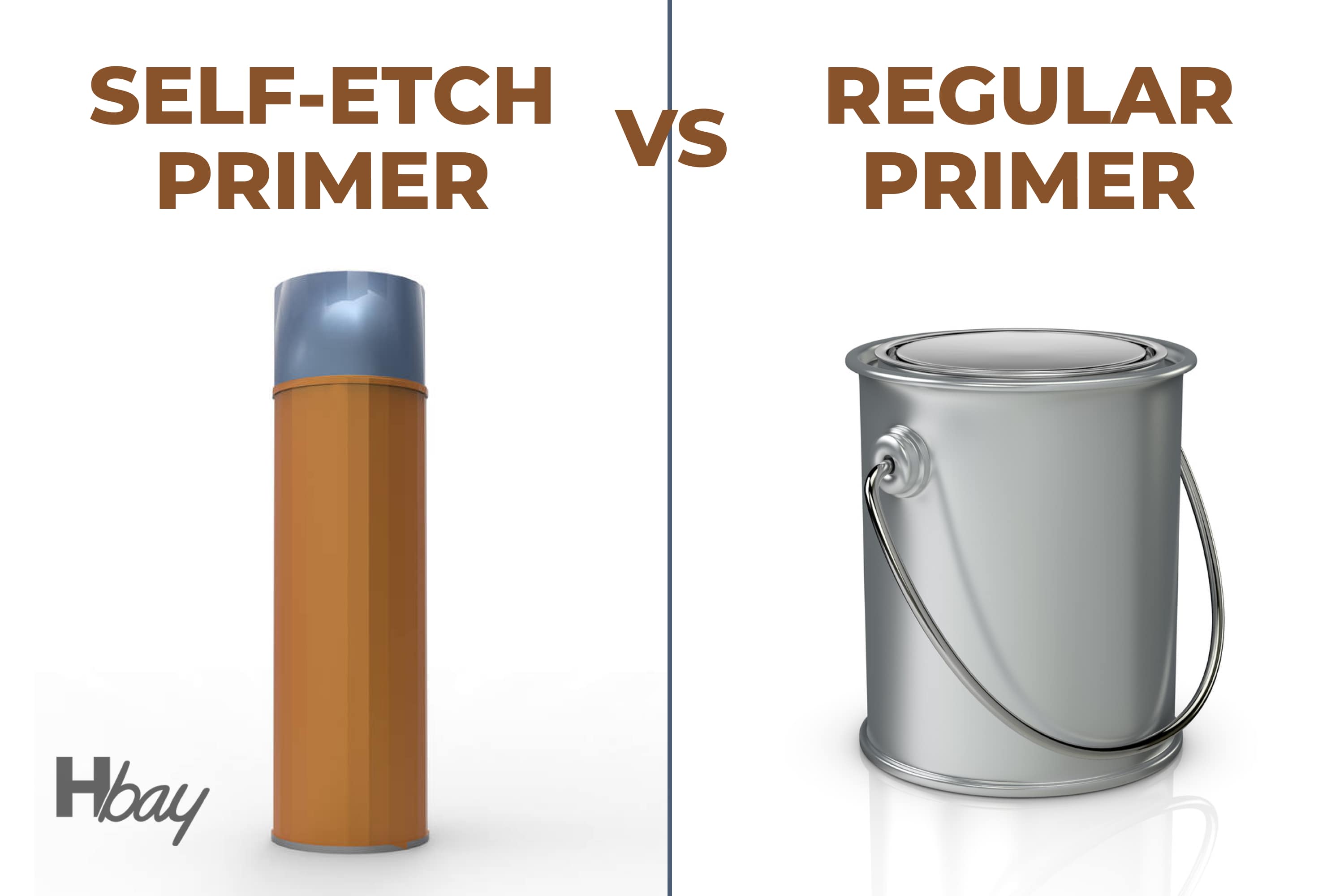
housekeepingbay.com
Smooth surfaces (especially metals and fiberglass) are known to be pretty hard to paint. With the help of a self-etching primer, the acid makes the surface rougher, leading to better adhesion. In fact, it is essentially doing the same job as manual sanding, but without much work and with less time.
At the same time, a self-etching primer and a regular primer do have things in common!
For example, each product works as a base coat for a painting project. So in fact, they both help the paint stick to the surface of the object better and stay there longer without peeling or bleeding.
Additionally, self-etching primers, as well as regular primers, can protect the underlying material. This is the thing you already know as well. These products are able to limit corrosion or oxidation and prevent scratches and dings.
Of course, you should note that the efficiency of their job may vary depending on the brand or product lines, so you will want to read the packaging to determine if it meets your needs.
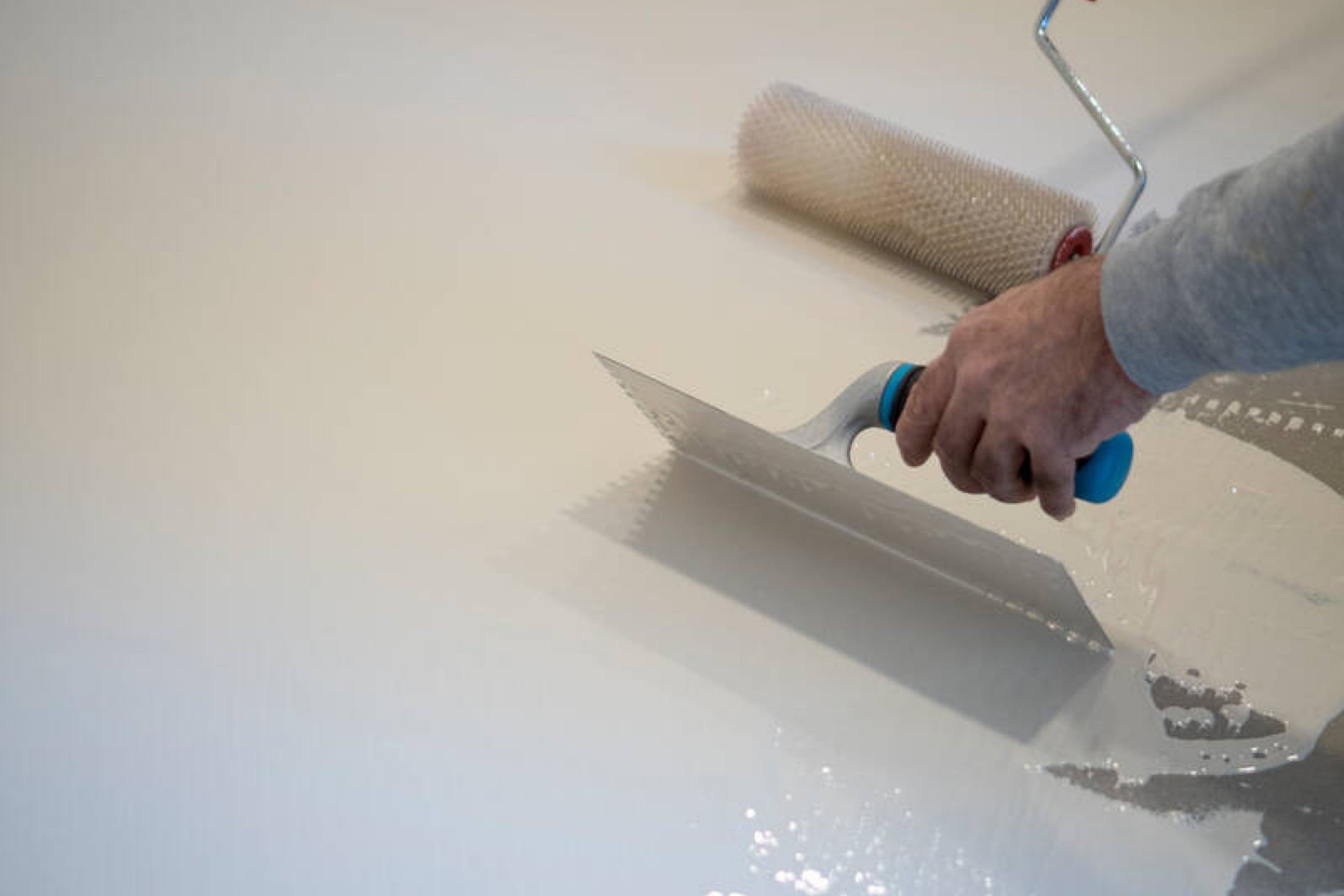
fotocanavera via VistaCreate
Can Self-Etching Primer Be Used Over Paint?
This is one of the most commonly asked questions that we receive from our readers. But the answer is not going to please you. Self-etching primers aren’t designed to work over paint. While you can technically apply self-etching primer over paint, the acid in this product can harm the underlying paint. If that occurs, it may begin to crack, paint, or chip!

If this happens to the underlying coat of paint, that damage can cause the new primer and paint to split since the paint operates as a type of base coat.
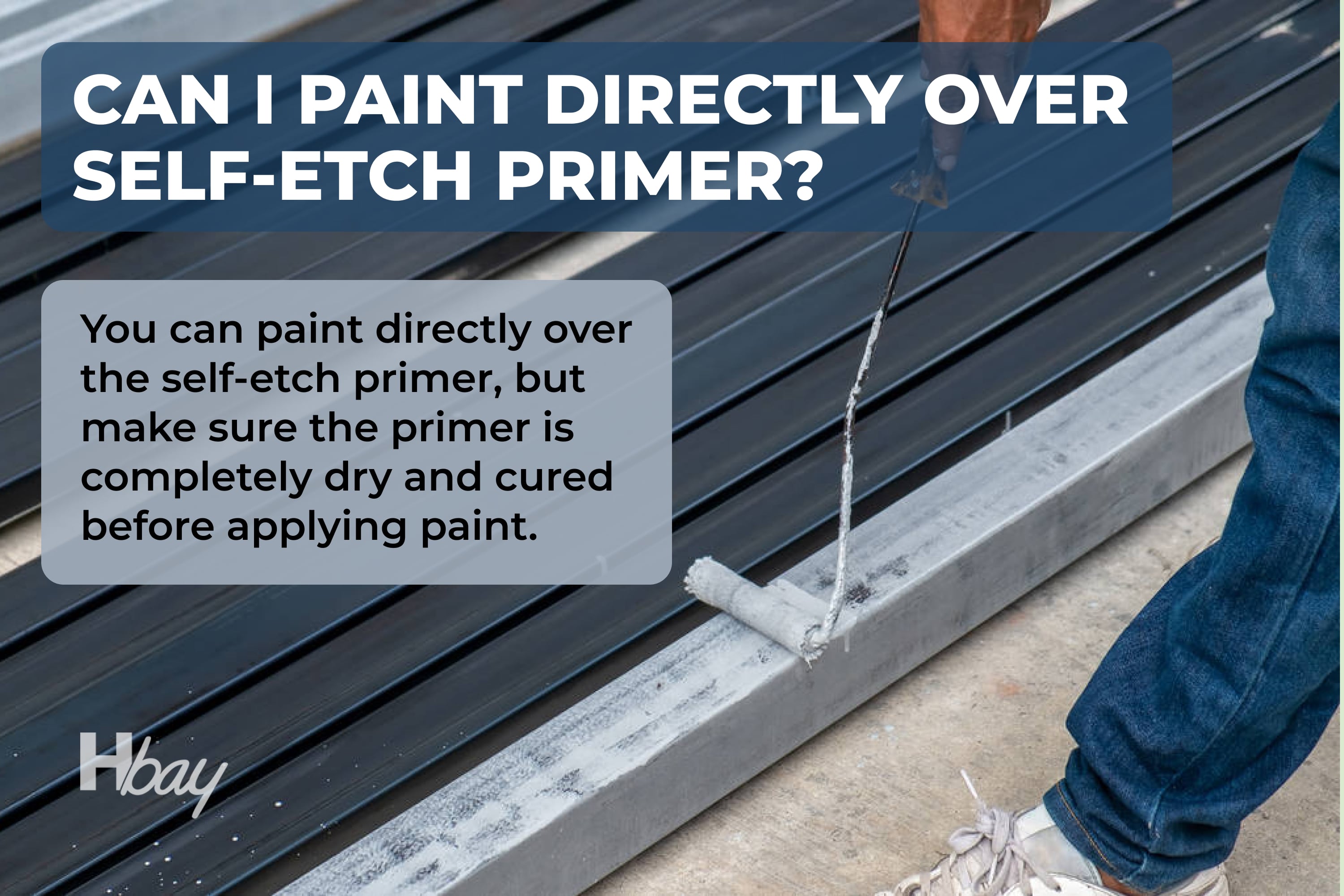
housekeepingbay.com
As an option, it can cause the underlying paint to separate from the base material.
If this scenario occurs, the primer and paint may start to flake off. Either way, this is not what you might want to get! This is why we recommend you limit using a self-etching primer to bare metal, fiberglass, or hard plastic (of course, if it is designed for it).
Can You Use a Self-Etching Primer on Wood?
Since quite many households have wooden items like furniture pieces, shelves, cabinets, various types of interior decor elements, etc, people often wonder whether they can safely use a self-etching primer on wooden surfaces.
Technically, it is possible to use self-etching primer on wood. The primer will bond with the wooden surface well enough, leaving a base coat. However, you will be surprised to know that in fact, using self-etching primers on wood is not necessary at all!
See, as you probably know, wood is a porous surface. So basically it isn’t as challenging to paint as metal, fiberglass, or hard plastic, for example. Wood absorbs paint really well and paint adheres to this material, leaving an even and smooth coating. Essentially, the acid etching capabilities of the self-etching primer just aren’t necessary.
So you can prepare your wooden object for painting using a regular primer instead. If the wood doesn’t have an existing finish, you might even not need sanding! However, if the wooden surface is painted, or stained, or has any other type of finish on it, you will need to do some prep work before priming to ensure proper adhesion!
At this point, you now have a complete answer to the “What is self-etching primer?” question.
As you know now, it is a type of primer that works double-duty, etching the surface and acting as a primer at the same time. Also, you are now aware that this primer can be used on materials like fiberglass and metal, as well as hard plastics. In addition, you learned that it can make the surface easier to paint, as well as protect it against scratches, oxidation, and more.
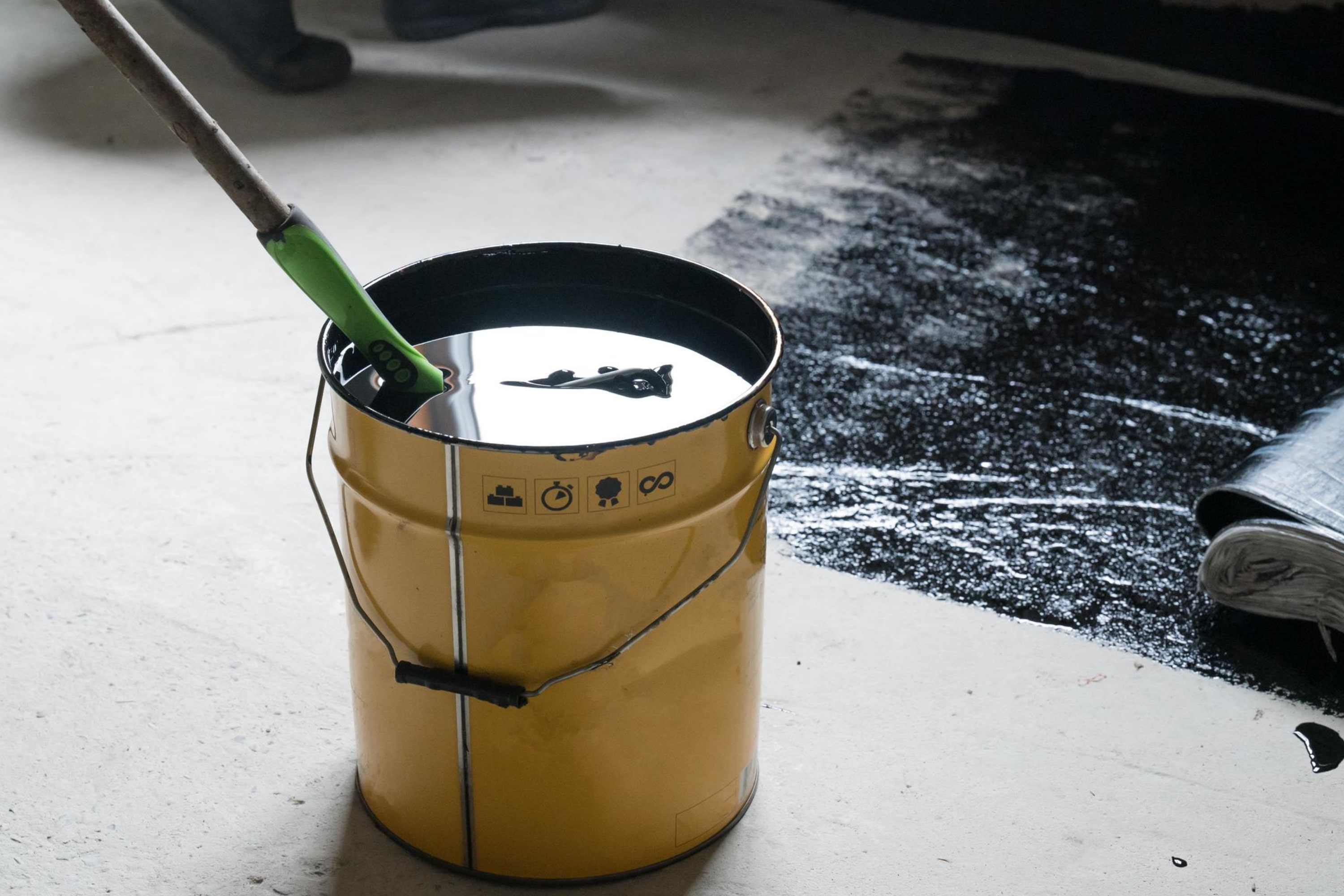
NIKO_Cingaryuk via VistaCreate
Ever wished paint sampling was as easy as sticking a sticker? Guess what? Now it is! Discover Samplize's unique Peel & Stick samples. Get started now and say goodbye to the old messy way!
Get paint samples




Frequently Asked Questions
⭐Can you paint directly over self etching primer?
You can paint directly over self-etching primer but you’ll need to make sure that the primer is thoroughly dried and cured before applying paint.
⭐How does self-etching primer work?
It is a rust preventive coating that etches and primes in one coat. Self-etching primer is an advanced spray system that allows you to spray at any angle and even upside down.
⭐Can I use etching primer for aluminum?
Yes, self-etching primers can be used for aluminum. Moreover, you need to use self-etching primer to paint aluminum, but prep work is especially important.
4 thoughts on “When to Use Self-Etching Primer?”
Leave a Reply

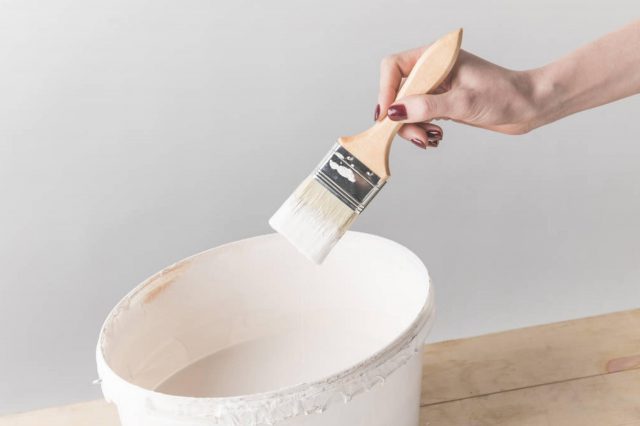
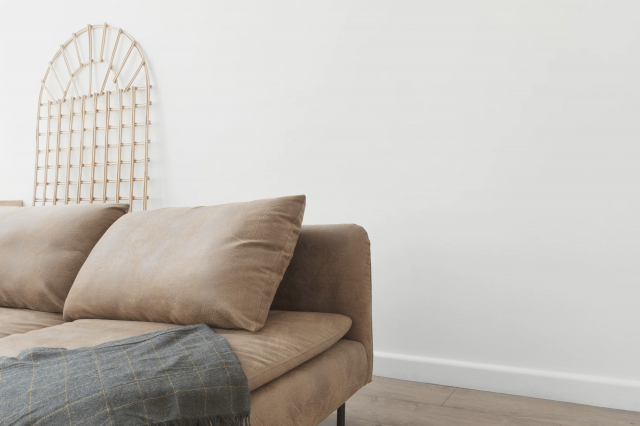
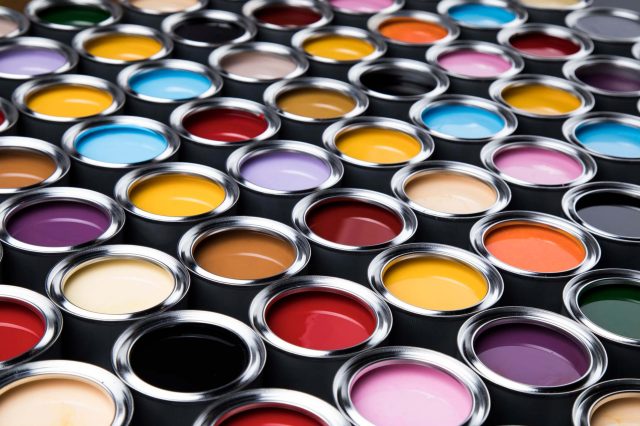
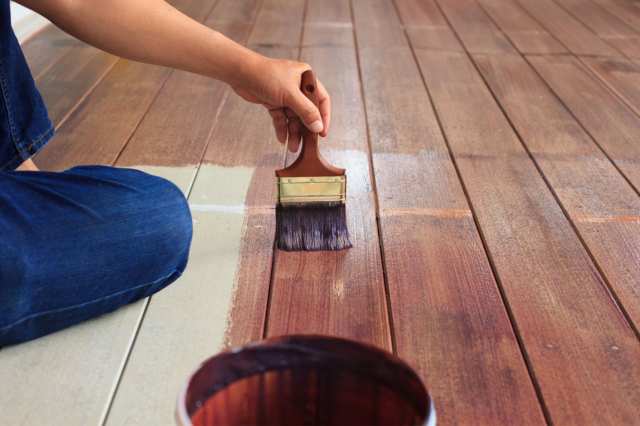



Hello! Could you please tell me whether it is needed to sand self-etching primers? Thank you very much!
Hello! Whether self-etching primer needs to be sanded depends on the product you are using. Some primers need no manual scuffing, others may require light scuffing. I’d say you should review any instructions that came with the product to determine whether sanding is a must.
Hi! I need your help folks. Are all self-etching primers suitable for protecting underlying materials on the surface?
Hello! As far as I know, not all of them are. Some self-etching primers are less adept in shielding the underlying material. Since that’s the case, it may simply work as a base coat for another primer with better protection abilities.